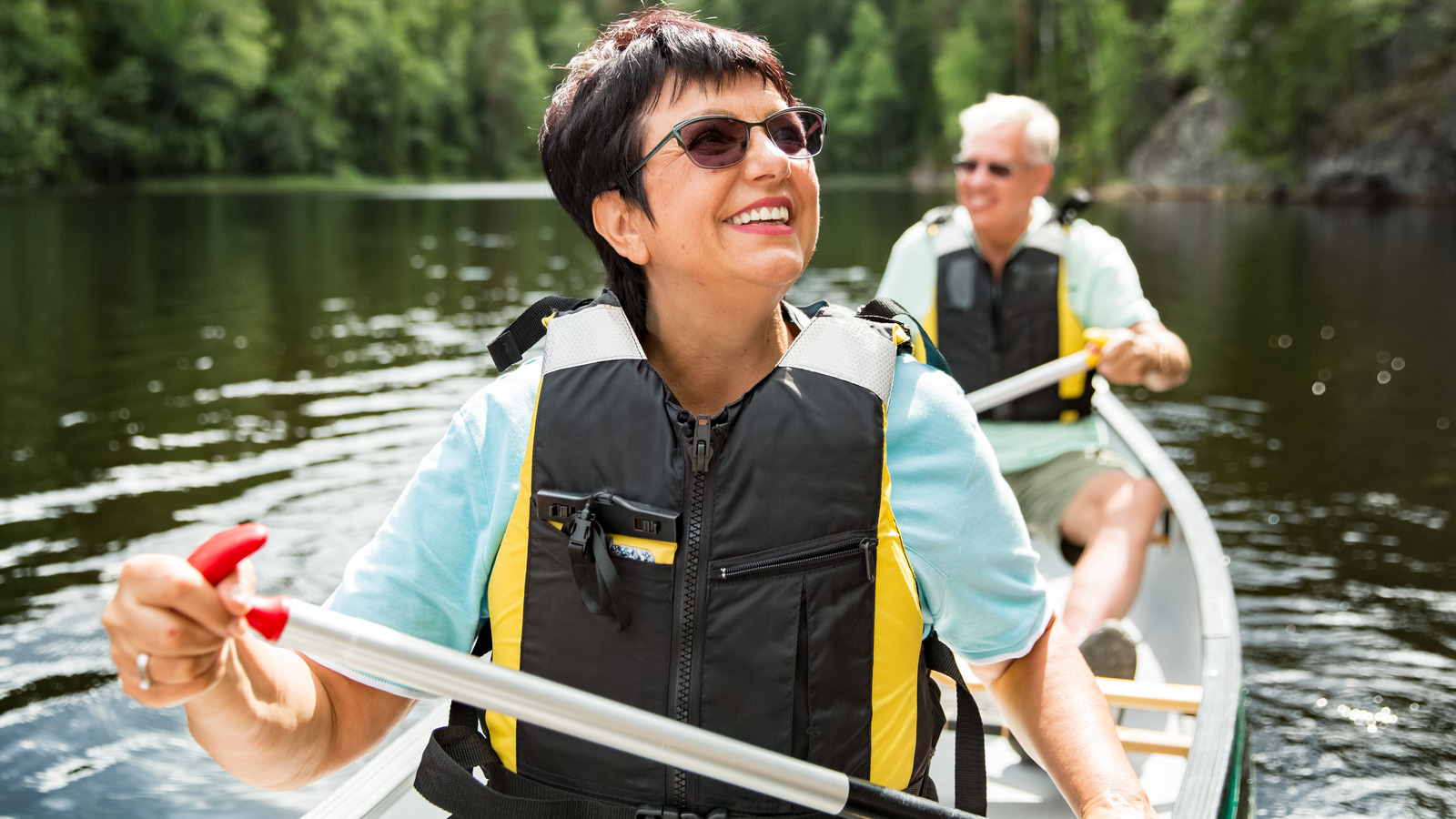AARP Travel Guide offers seasoned travelers invaluable resources for planning enriching and accessible adventures. This guide isn’t just about booking flights and hotels; it’s about crafting experiences tailored to the specific needs and desires of the mature traveler. From exploring captivating destinations to finding accommodations that prioritize comfort and accessibility, the AARP Travel Guide provides comprehensive information to help you plan a memorable trip, regardless of your budget or physical capabilities.
We delve into the diverse destinations highlighted by AARP, comparing travel options across various age groups and budgets. We explore the range of accommodations, transportation choices, and engaging activities designed for older travelers, emphasizing accessibility and ease of travel. Furthermore, we offer practical guidance on budgeting, planning, and navigating health and safety concerns, ensuring a smooth and enjoyable travel experience. We also compare AARP’s offerings to other travel guides, highlighting its unique value proposition for its target demographic.
Destinations Featured in AARP Travel Guides
AARP travel guides cater to the interests and needs of a mature traveler, emphasizing comfort, accessibility, and enriching experiences. Popular destinations are chosen based on factors such as ease of navigation, cultural richness, historical significance, and the availability of suitable accommodations and activities.
AARP frequently highlights destinations that offer a balance of relaxation and exploration. These locations often prioritize accessibility, ensuring travelers can comfortably navigate the area, regardless of physical limitations. The guides also prioritize destinations with strong historical or cultural significance, providing opportunities for learning and personal enrichment.
Popular Destinations and Their Appeal
Destinations frequently featured in AARP travel guides include locations like coastal regions of California, charming towns in New England, historic cities such as Charleston, South Carolina, and cultural hubs like Santa Fe, New Mexico. Coastal California offers stunning scenery, mild weather, and a variety of accessible activities, from leisurely walks along the beach to exploring charming coastal towns. New England’s charming towns boast picturesque landscapes, historical sites, and a slower pace of life. Charleston provides a rich history, beautiful architecture, and a vibrant culinary scene, while Santa Fe offers a unique blend of Native American and Spanish cultures, art galleries, and stunning desert landscapes. These locations appeal to AARP’s demographic because they offer a combination of relaxation, cultural enrichment, and manageable travel experiences.
Travel Options for Different Age Groups within the AARP Demographic
The AARP demographic encompasses a broad range of ages and physical abilities. Travel options are tailored to meet these diverse needs. For example, individuals in their 60s might opt for active adventures, such as hiking or biking tours, while those in their 70s and 80s may prefer more relaxed itineraries with less strenuous activities. Travel packages often cater to specific interests, offering options like escorted tours with built-in accessibility features, cruises designed for mature travelers, or independent travel arrangements with support services. Consideration is given to factors such as the length of trips, the pace of activities, and the level of assistance required. For instance, a multi-generational family trip might include options for both active excursions and relaxing downtime, ensuring everyone feels comfortable and engaged.
Diverse Destinations and Travel Options
The following table showcases a variety of destinations featured in AARP travel guides, highlighting the diversity of travel options available.
| Destination | Type of Trip | Key Features | Price Range |
|---|---|---|---|
| Charleston, South Carolina | Historic City Tour | Walking tours, historic architecture, plantation visits, delicious Southern cuisine | $$ – $$$ |
| Acadia National Park, Maine | Nature & Scenic Drive | Stunning coastal scenery, hiking trails (various difficulty levels), wildlife viewing, carriage roads | $ – $$ |
| Sedona, Arizona | Spiritual & Wellness Retreat | Red rock formations, hiking, yoga retreats, spa treatments, Native American culture | $$ – $$$$ |
| Costa Rica | Eco-Adventure Tour | Rainforests, wildlife viewing, zip-lining, sustainable tourism practices, accessible lodges | $$$ – $$$$ |
Health and Safety Considerations
Planning a trip is exciting, but for older travelers, prioritizing health and safety is paramount. AARP travel guides emphasize proactive measures to ensure a worry-free and enjoyable experience. This involves careful preparation before departure, vigilance during the trip, and knowing how to handle unexpected situations.
AARP travel guides strongly recommend several key health and safety precautions. These include consulting your physician before traveling, especially if you have pre-existing medical conditions. Packing a comprehensive first-aid kit with your prescription medications, and carrying a list of your allergies and emergency contacts is also crucial. Staying hydrated, eating nutritious food, and getting adequate rest are equally important for maintaining good health while traveling.
Travel Insurance and Emergency Preparedness
Travel insurance is not merely a suggestion; it’s a vital safeguard. AARP guides highlight the importance of comprehensive travel insurance that covers medical emergencies, trip cancellations, and lost luggage. Such insurance can significantly alleviate financial burdens and stress during unforeseen circumstances. Emergency preparedness goes beyond insurance. This includes knowing the location of the nearest hospital or medical clinic at your destination, familiarizing yourself with local emergency numbers, and sharing your itinerary with family or friends back home. Having a backup plan for communication, in case of phone failure, is also recommended.
Handling a Medical Emergency
Imagine this scenario: While sightseeing in a foreign city, an older traveler experiences a sudden, severe fall, resulting in a suspected broken hip. They are alone, unable to contact their travel companions, and in significant pain. Following AARP’s recommendations, the first step would be to call for emergency medical assistance. This would involve using a local emergency number (often 911 equivalents are readily available in tourist areas), or if possible, contacting their hotel’s concierge for help. Simultaneously, they should attempt to alert their emergency contacts back home, if they are able, providing their location and the situation. Once medical assistance arrives, the traveler should present their travel insurance information and any relevant medical documents, such as their prescription medication list. If possible, a travel companion should be contacted to provide support and assist with communication. The insurance company should also be notified as soon as possible to initiate the claims process. The importance of clear communication and having necessary documentation readily available are critical factors in effectively managing such situations.
End of Discussion
Ultimately, the AARP Travel Guide serves as a comprehensive companion for mature travelers, empowering them to explore the world with confidence and ease. By providing detailed information on destinations, accommodations, activities, and budgeting strategies, alongside essential health and safety advice, the guide facilitates unforgettable travel experiences tailored to the unique needs and preferences of its readership. It’s more than just a travel guide; it’s a passport to worry-free exploration and the creation of lasting memories.




